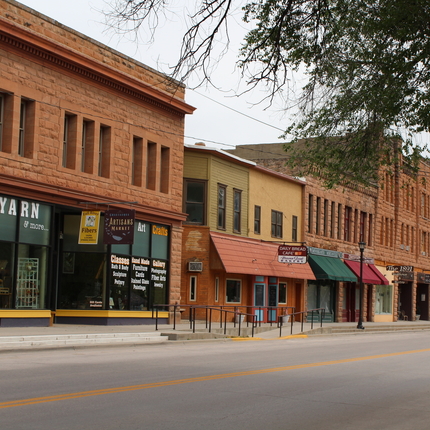Heidi Kolbeck-Urlacher, senior policy associate, [email protected], 605.240.0039; Teresa Hoffman, senior communications associate, [email protected], 402.687.2100, ext. 1012
BRANDON, SOUTH DAKOTA – Many South Dakotans continue to experience challenges with broadband access, according to a new resource guide released today by the Center for Rural Affairs.
Developed to provide communities with information about the current state of broadband in South Dakota, as well as resources available to address challenges and needs, the guide includes results of a survey conducted by the Center in late 2021.
“We wanted to learn more about their broadband experiences and to hear directly from rural residents about what broadband is like in their communities, how they are using the internet to meet the needs of their daily lives, and how they rate their own digital literacy skills,” said Heidi Kolbeck-Urlacher, senior policy associate for the Center, and author of the guide.
One hundred South Dakotans participated and of those surveyed:
- 33% said their current broadband meets their needs.
- 25% said they use their cell phones for their primary internet source.
- 70% said they use their broadband for office use, and more than half use it for business purposes; 35% use their internet connection for health care.
- When asked to choose the top three most important issues to them, 60% said faster internet speed, 52% said lower cost of internet service, and 50% said more reliable internet service.
Kolbeck-Urlacher said the survey reinforces that reliable internet has become a necessity and essential part of everyday life. In the guide residents from several South Dakota communities share their experiences with broadband service.
As of 2021, state officials estimated 135,000 people—or one in six South Dakotans—do not have adequate broadband access. South Dakota currently ranks 22nd in the nation for internet coverage, speed, and availability, and 35th in access to 100 Mbps broadband, according to research by BroadbandNow.
Doug Riediger, a farmer living near Wakonda, said the lack of broadband is a major problem for his family, who use it for school, work, and their farm operation.
“I raise cattle and crops and do marketing,” Riediger said. “We rely on remote cameras and remote switches for many farm operations, such as lights, heaters, pens, and feeders. I also have to complete paperwork for the Farm Service Agency and U.S. Department of Agriculture and I can’t get it done at home. I have to download all my emails when I’m in town so I can read them later. I need speeds that can support school and my business. People living in rural areas aren’t using the internet to play video games, this is our life.”
Kolbeck-Urlacher said broadband provides numerous economic and social benefits, and investments in this critical infrastructure will help ensure rural communities continue to be great places to live and work. It could also help communities attract new residents looking to relocate or return to rural areas.
In 2021, the United Van Lines Annual National Movers Study ranked South Dakota as the No. 2 state for inbound migration, noting a nationwide trend of Americans moving to lower-density areas to be closer to family.
In addition to the survey results and perspectives of residents, the guide includes resources on identifying and communicating about coverage gaps, attracting investment in broadband infrastructure, enhancing digital literacy in your community, and broadband cost assistance programs, such as the South Dakota Lifeline Program and Affordable Connectivity Program.
For more information, or to view the South Dakota Broadband Resource Guide, visit cfra.org/publications.
# # #


